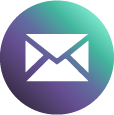
Challenges of Medical Devices Reprocessing E-Modules
How to navigate on TalentLMS
We’ve improved the overall experience for our E-modules making them more engaging, easy to use and user-friendly.
“Challenges of Medical Devices Reprocessing” E-Modules
General Announcement
Every day, millions of surgeries are done throughout the World. Surgical Site Infections (SSIs) can complicate any type of surgery and are among the most prevalent healthcare associated infections (HAI)1. According to the ECDC, 18,3% of all HAIs in Europe are SSIs.2
SSIs are also among the most preventable Healthcare Associated Infections (HAIs), requiring interventions in several moments of the patient stay.1 The consequences of SSI are very broad: morbidity, mortality and costs are increased.1,3
According to the last ECRI report, device cleaning, disinfection, and sterilization are on the top 10 of Patient Safety Concerns.8
Its success is dependent on a deep commitment of several facilities departments and healthcare workers.12

Prof. Francesco Venneri

Prof. Jon Otter

Mrs. Moya Alexander

Mrs. Soraia Pedroso

Eng. Jonathan Hart

Prof. Francesco Venneri
Clinical Risk Manager and Patient Safety Officer
Florence Healthcare System, Italy
SYNOPSIS:
A brief survey of the “art” of reprocessing recalling its history and background through guidelines on a national and international basis. A focus on reprocessing as part of the concept of patient safety and risk management principles towards the goal of reducing HAIs correlated to inadequate procedures.

- Guidelines must be applied and reviewed periodically; major updating assures accountability
- Correct reprocessing steps and their knowledge are weapons against HAIs and assure patient trustworthiness in healthcare institutions.
- No need for a “defensive medicine” attitude; claims and lawsuits may be reduced by a correct understanding and application of reprocessing steps and milestones.
- Transparency and good communications to patients may increase affordance and help to reduce litigations.
- Reprocessing is to be regarded as a “best practice” in the field of infection prevention and control and many clinical audits should be performed to understand criticalities and implement improvement strategies on an organizational basis.

Prof. Jon Otter
Honorary Senior Lecturer in HCAI AMR
Imperial College London
SYNOPSIS:
This webinar will provide an overview of HAI associated with medical device reprocessing, including a summary of the epidemiology of HAI related to medical device reprocessing failure. Past failures in medical device reprocessing will be reviewed to promote safer systems to prevent HAI from medical device reprocessing in the future.

- Overview of medical device decontamination in the context of HCAI: Medical devices carry with them a large or small risk of transmitting infection.
- Summary of HCAI associated with medical device reprocessing: Inadequately decontaminated medical devices have been shown to spread infection.
- Learning from past failures in medical device decontamination to prevent HCAI: Several different strategies can be used to reduce risk associated with medical devices
- A look at medical device decontamination of the future: As medical devices become more complicated, the risks of inadequate decontamination are likely to grow; we need to embrace the latest systems to ensure the safest possible decontamination.

Mrs. Moya Alexander
Decontamination Lead
Imperial College Healthcare NHS Trust
SYNOPSIS:
Minimally invasive surgery which includes both laparoscopic and robotic surgery has brought new challenges with regards the reprocessing of medical devices. Most of these instruments are not designed to be disassembled for cleaning, disinfection, and sterilization.

- There are challenges with minimal invasive surgeries and robotic instruments and they are extremely expensive
- To improve the cleaning therefore preventing bioburden and biofilms build-up and prevent HCAI’s and SSI’s.
- Follow the manufacturer’s instructions and make sure that future developments are in line with best practice.
- Training, education and competencies are key to make this work.

Mrs. Soraia Pedroso
Clinical Nurse Specialist/ Lead Infection Prevention and Control
Nurse at Hospital Beatriz Ângelo, Lisbon
SYNOPSIS:
The outbreaks with duodenoscopes identified in the beginning of this last decade have brought a big and real concern regarding the flexible endoscopes reprocessing since most of those instruments are complex to be proper cleaning. Besides the question is now if we should just high level disinfect them or sterilize them?

- Multidrug resistant organism (MDRO) and new genes exposed flaws in design, associating outbreaks to flaws and breaches in scope design rather than reprocessing steps compliance.
- Systematic and rigorous compliance with the endoscope reprocessing core elements is essential, but it does not meet the technical challenges of the complexity of the equipment. With all the major organizations that regulate good practice (CDC, ESGENA, FDA) encouraging the escalation of the safety levels of the reprocessing process.
- Quality assessment of the reprocessing process is mandatory and essential to ensure compliance with guidelines. Adenosine triphosphate (ATP) is a good marker for the cleaning process (validation of gross and organic removal) but can’t be used as a marker for the HL disinfection process or bacterial contamination, for that you should choose – microbiological culture sampling.
- MDRO and new genes exposed flaws in design, associating outbreaks to flaws and breaches in scope design rather than reprocessing steps compliance.
- There is no evidence that double HLD or HLD+Ethylene Oxide Sterilization (ETO) is better than single HLD cycle (access by ATP and microbiological sampling).
- But ETO is identified as the intervention that ended at least 3 published outbreaks.
- ETO is unlikely to be the answer to all problems…12 hours cycles, risk of toxicity and scarce equipment’s.
- Hydrogen Peroxide (HP) sterilization could be a solution for the flexible scopes sterilization but may not be readily available for all the gastroenterology endoscopes.
- Disposable scopes could resolve the infection control issues, but at an unbearable environmental and economic cost.
- Low temperature sterilization (LTS) seems to be the path to go, but industry must make combined efforts, new prototypes must address reprocessing needs – it´s not good if It´s not clean.

Eng. Jonathan Hart
Head of Technological Innovation and Health Technology Assessment
Campus Bio-Medico University Hospital, Rome
SYNOPSIS:
This webinar will provide an overview on the role played by Health Technology Assessment (HTA) in a multidimensional approach to planning, managing and improving the MD reprocessing cycle, contributing to higher quality standards and enhance Patient Safety.

- HTA is a multidimensional methodology that allows a comprehensive and evidence based approach to MD reprocessing improvement.
- HTA combines the appraisal of the technological, clinical, economic and organization factors of reprocessing.
- Planning and control are key in order to meet reprocessing service requirements
- Effectiveness depends on organizational factors as well as adequate equipment selection
- Efficiency and reliability of the process are the result of equipment turnover and maintenance programs.
- Effectiveness and efficiency also strongly depend on training and IFUs.
- The management of reusable MDs and surgical instruments affects the overall outcome of reprocessing.
References :
1. Global guidelines for the prevention of surgical site infection, second edition. Geneva: World Health Organization; 2018. (pag.27 3.1 Surgical site infection risk factors: epidemiology and burden worldwide). https://www.who.int/gpsc/ssi-prevention-guidelines/en/
2. Prevalence of healthcare-associated infections, estimated incidence and composite antimicrobial resistance index in acute care hospitals and long-term care facilities: results from two European point prevalence surveys, 2016 to 2017 (Pag. 7, Table 3) https://www.eurosurveillance.org/content/10.2807/1560-7917.ES.2018.23.46.1800516
3. Badia, J. M., Casey, A. L., Petrosillo, N., Hudson, P. M., Mitchell, S. A., & Crosby, C. (2017). Impact of surgical site infection on healthcare costs and patient outcomes: a systematic review in six European countries. The Journal of hospital infection, 96(1), 1–15. https://doi.org/10.1016/j.jhin.2017.03.004
4. Gandaglia, G., Ghani, K. R., Sood, A., Meyers, J. R., Sammon, J. D., Schmid, M., Varda, B., Briganti, A., Montorsi, F., Sun, M., Menon, M., Kibel, A. S., & Trinh, Q. D. (2014). Effect of minimally invasive surgery on the risk for surgical site infections: results from the National Surgical Quality Improvement Program (NSQIP) Database. JAMA surgery, 149(10), 1039–1044. https://doi.org/10.1001/jamasurg.2014.292
5. Hermsen, E. D., Hinze, T., Sayles, H., Sholtz, L., & Rupp, M. E. (2010). Incidence of surgical site infection associated with robotic surgery. Infection control and hospital epidemiology, 31(8), 822–827. https://doi.org/10.1086/654006
6. Ofstead, C. L., Buro, B. L., Hopkins, K. M., Eiland, J. E., Wetzler, H. P., & Lichtenstein, D. R. (2020). Duodenoscope-associated infection prevention: A call for evidence-based decision making. Endoscopy international open, 8(12), E1769–E1781. https://doi.org/10.1055/a-1264-7173
7. Scoping the problem – endoscopy associated infections – The Lancet Gastroenterology & Hepatology (www.thelancet.com/gastrohep Vol 3 July 2018)
8. Special Report Top 10 Patient Safety 2020 – Executive-Brief, ECRI, page 9, 5. Device Cleaning, Disinfection, and Sterilization. https://www.ecri.org/landing-top-10-patient-safety-concerns-2020
9. Dancer, S. J., Stewart, M., Coulombe, C., Gregori, A., & Virdi, M. (2012). Surgical site infections linked to contaminated surgical instruments. The Journal of hospital infection, 81(4), 231–238. https://doi.org/10.1016/j.jhin.2012.04.023. Journal Hosp Infection 2012 Aug;81(4):231-8. doi: 10.1016/j.jhin.2012.04.023. Epub 2012 Jun 15.
10. Southworth P. M. (2014). Infections and exposures: reported incidents associated with unsuccessful decontamination of reusable surgical instruments. The Journal of hospital infection, 88(3), 127–131. https://doi.org/10.1016/j.jhin.2014.08.007
11. Tosh, P. K., Disbot, M., Duffy, J. M., Boom, M. L., Heseltine, G., Srinivasan, A., Gould, C. V., & Berríos-Torres, S. I. (2011). Outbreak of Pseudomonas aeruginosa surgical site infections after arthroscopic procedures: Texas, 2009. Infection control and hospital epidemiology, 32(12), 1179–1186. https://doi.org/10.1086/662712
12. WHO Library Cataloguing-in-Publication Data Decontamination and reprocessing of medical devices for health-care facilities. (pag.12 – Introduction; pag.14 Quality Assurance) https://www.who.int/infection-prevention/publications/decontamination/en/










